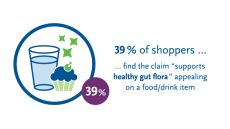Special edition: Risk communication
Communicating when the data are not clear-cut

While no one would ever wish scientists, regulators and governments ever do anything but alert the public or withdraw a product or substance when health hazards are detected, defining and proving such risks is often far from clear cut.
Likewise, nutrient benefits can be difficult to define in pharma-styled disease-reduction models.
So authorities are often left to make sense of inconclusive information they must shoehorn into whatever version of a risk-benefit model they are following at the time, before deciding if risk alerts, product recalls or more are warranted.
Melamine
At the less ambiguous end of the spectrum there are situations like the melamine-baby milk contamination crisis that arose in China at the end of 2008. Infant deaths and more than 50,000 kidney-related sicknesses saw the Chinese government issue recalls and high-alerts that were quickly echoed by the world’s food safety agencies.
Contaminated product was stripped from shelves globally in efforts to contain the problem as the Chinese government eventually made some of those found responsible for the problem pay in the most severe terms – the death penalty.
The swift communication of the problem helped contain a problem that was driven by the economic motivation of adding melamine to milk powder to make it appear the protein content of the product was higher than it actually was.
But despite the actions, the problem has not been resolved and China’s State Council’s Food Safety Commission announced in January that since July 2010 it had recovered 2,132 tonnes of milk powder laced with the industrial chemical, with six deaths and the sickening of at least 300,000 others reported since 2008.
Omega-3
Omega-3 is a more ambiguous example. While the benefit side of the coin is strong – omega-3 forms have won regulatory backing for their ability to benefit hearts, eyes and cognitive function, even in the ultra-tough European claims system – dosage and safety questions continue to be posed in some quarters.
The German Federal Institute for Risk Assessment (BfR) suggests overconsumption of certain omega-3s could lead to increased cholesterol levels, risk of cardiovascular mortality among long term users with cardiovascular disease, inhibited immune systems in the elderly, and anaemic effects.
The omega-3 industry calls the findings “unfounded” but the BfR is a respected body and it has communicated its risk views on its website and in mailshots and its findings are being considered at European committee level where the approval of certain omega-3 health claims is being debated, even as the agency itself acknowledged its opinion was, "a conservative procedure with a high degree of certainty which nonetheless is not necessarily achieved in reality".
But this is the nature of much risk-benefit modelling. It is often highly hypothetical.
Marine-sourced omega-3s have also been the subject of PCB/lead contamination communications, although they have tended to come from non-government sources in recent years, as the industry has communicated the data backing its own safety credentials.
A good example of the battle ground of such communications is an ongoing legal battle in California between parties that gained a lot media attention after suing the omega-3 industry over trace PCB content in omega-3 supplements it said should carry cancer warnings.
The action prompted the omega-3 industry into a communication campaign of its own highlighting the fact PCB (polychlorinated biphenyl) is present without recorded safety concern at trace levels in almost all food items from butter to meat to other supplements, and even products like toys.
The two camps are currently in negotiation to reach a settlement.
Aspartame
One of the most famous examples of adverse risk communication that reached hyperbolic levels was aspartame – the low-calorie sweetener that drove the diet cola explosion in the 1980s but was subsequently claimed to be carcinogenic after several negative studies and adverse event reports.
Much of this data has been discounted, leading to aspartame being given the OK by scientific agencies in more than 100 countries of the world including the US Food and Drug Administration (FDA) and the European Food Safety Authority (EFSA). Such agencies do say, nontheless, they are watching the scientific literature for any anomalies.
The case of aspartame is a good example of how seemingly contradictory evidence can enter the public consciousness - and the internet - to such an extent that communications from the authorities intended to reassure the public is loudly dismissed by the critics. The very foundations of the science may be drawn into arguments of the unconvinced, as well as the independence of risk assessment bodies such as EFSA whose very existence is based on providing independent, science-based advice to the European Commission!
The jury may always remain out to some extent but the public should be thankful there are bodies performing such work to ensure only nutrients that are proven to safely deliver benefits make it to the shelves.






















